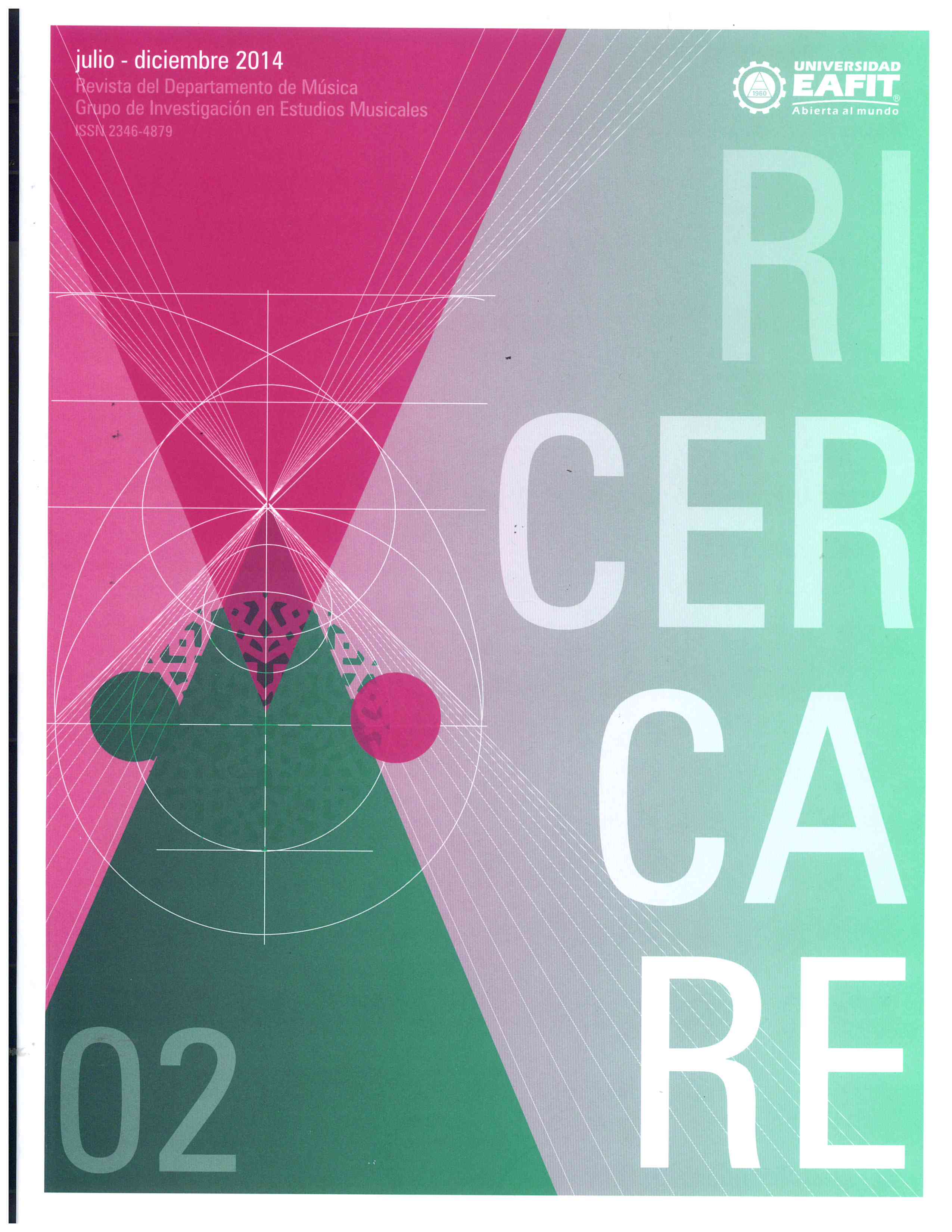Una aproximación a la estructura rítmica del pasillo colombiano: un análisis desde la perspectiva de la teoría generativa de la música tonal
Main Article Content
Keywords
pasillo, colombian music, GTTM, rythm, syncopation.
Abstract
This article revolves around the Generative Theory of Tonal Music, GTTM, mainly in what relates to the rhythmic structure of music with example obtained solely from Colombian pasillos. Each concept of the generative theory is applied to the analysis of fragments of pasillos in a detailed and explanatory model. The criteria for choosing the examples was that of analytical interest. In other words, the pasillos chosen were those that could raise interesting questions when applying the theory and which were relevant because of their rhythmical characteristics.
Downloads
References
Benjamin, W. E. (1984). A theory of musical meter. Music Perception: An
Interdisciplinary Journal. Rhythm and Meter, Berkeley, California: 1(4), 355-413.
Bermúdez Cújar, E. (2008). From Colombian “national” song to “Colombian song”: 1860-1960. Freiburg, Alemania: Deutsches Volksliedarchiv.
Cooper, G. W., y Meyer, L. B. (1960). The rhythmic structure of music. Chicago: The University of Chicago Press.
Lerdahl, F., y Jackendoff, R. (1983). A generative theory of tonal music. Cambridge, Massachusetts: MIT Press.
Randel, D. M., ed. (1986). Syncopation. The New Harvard Dictionary of Music. Cambridge, Massachusetts: Belknap Press of Harvard University Press, 861.
Tecumseh Fitch, W., y Rosenfeld, A. (2007). Perception and production of syncopated rhythms. Music Perception: An Interdisciplinary Journal, Berkeley, California: University of California Press, 25(1), 43-58.

